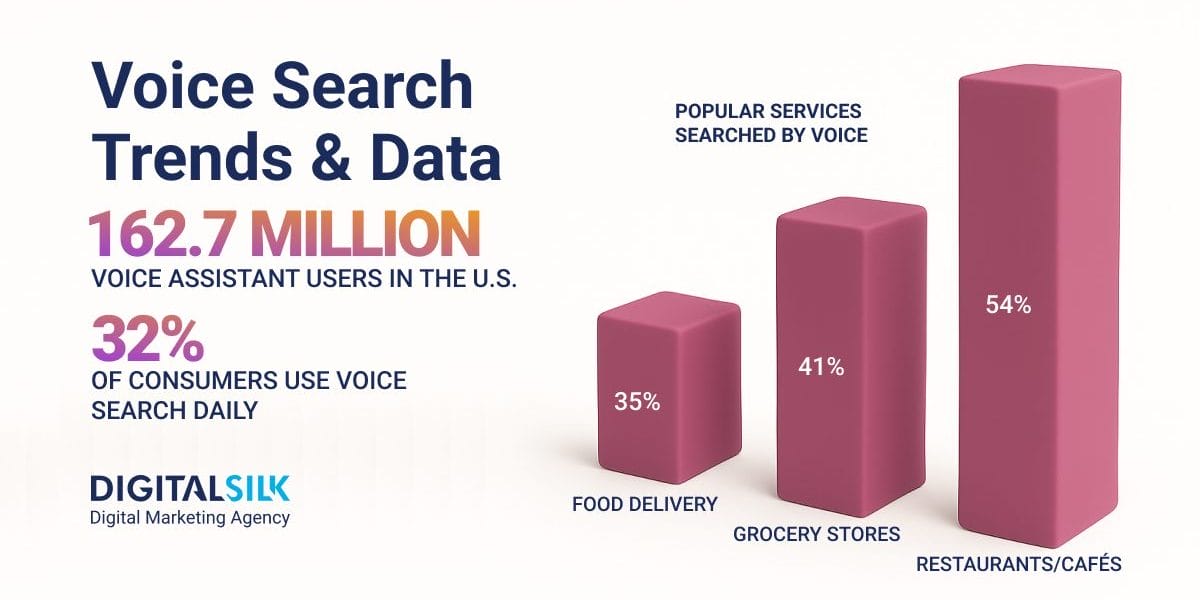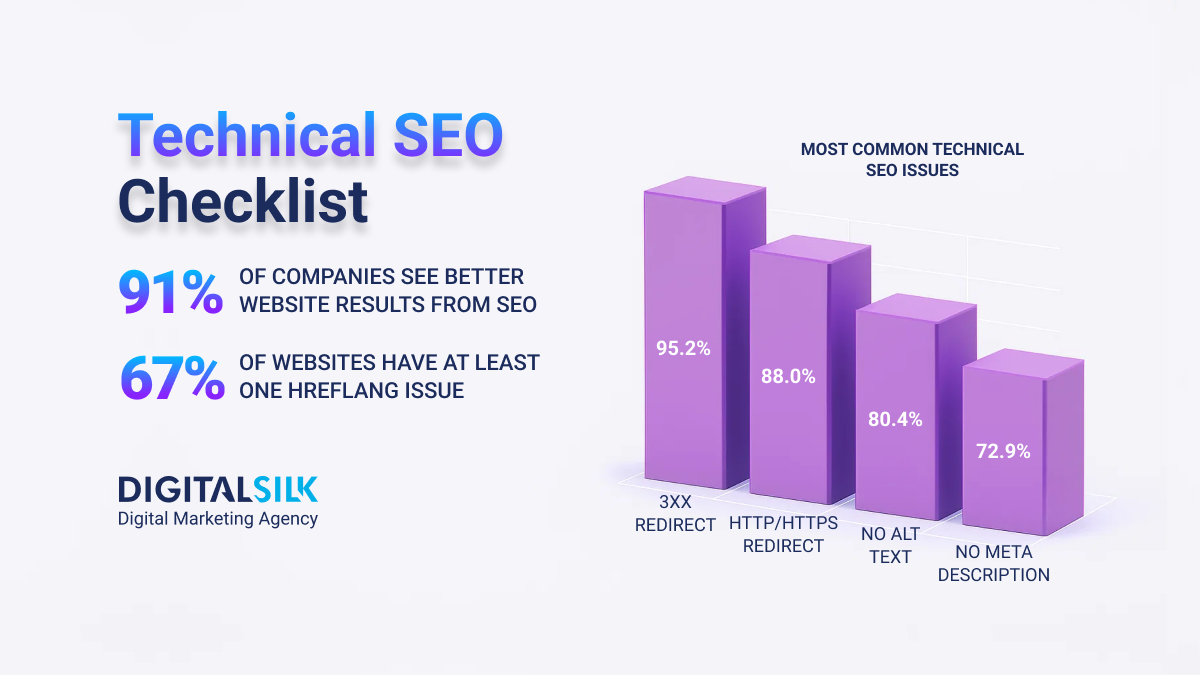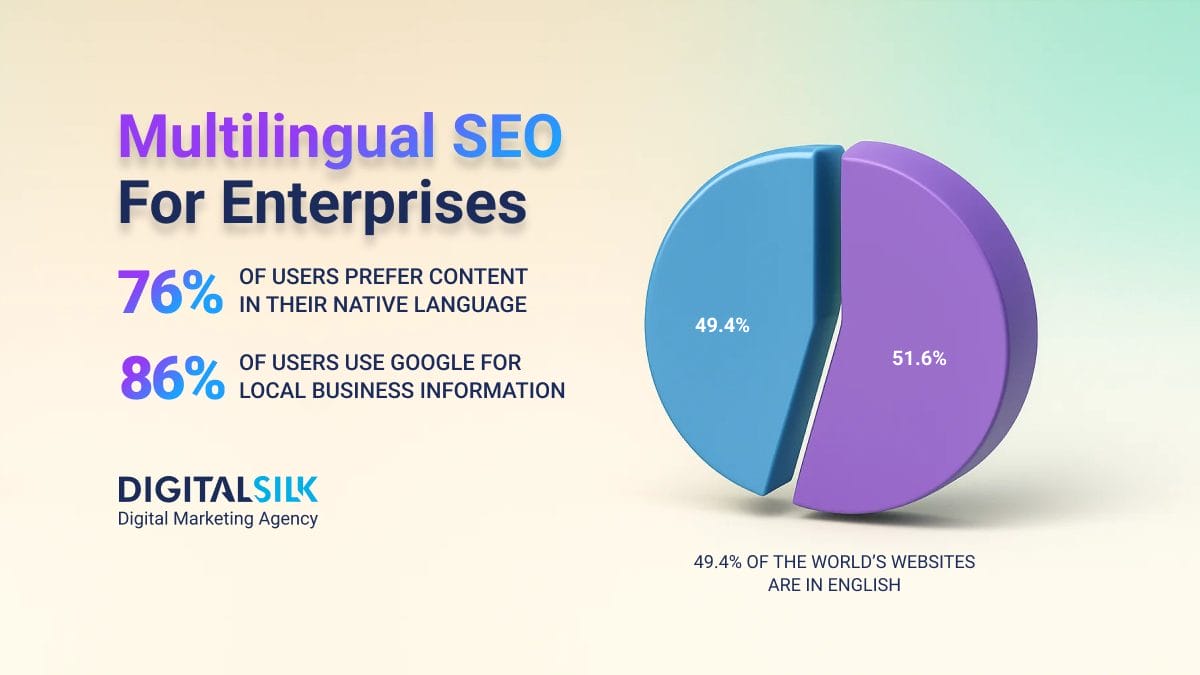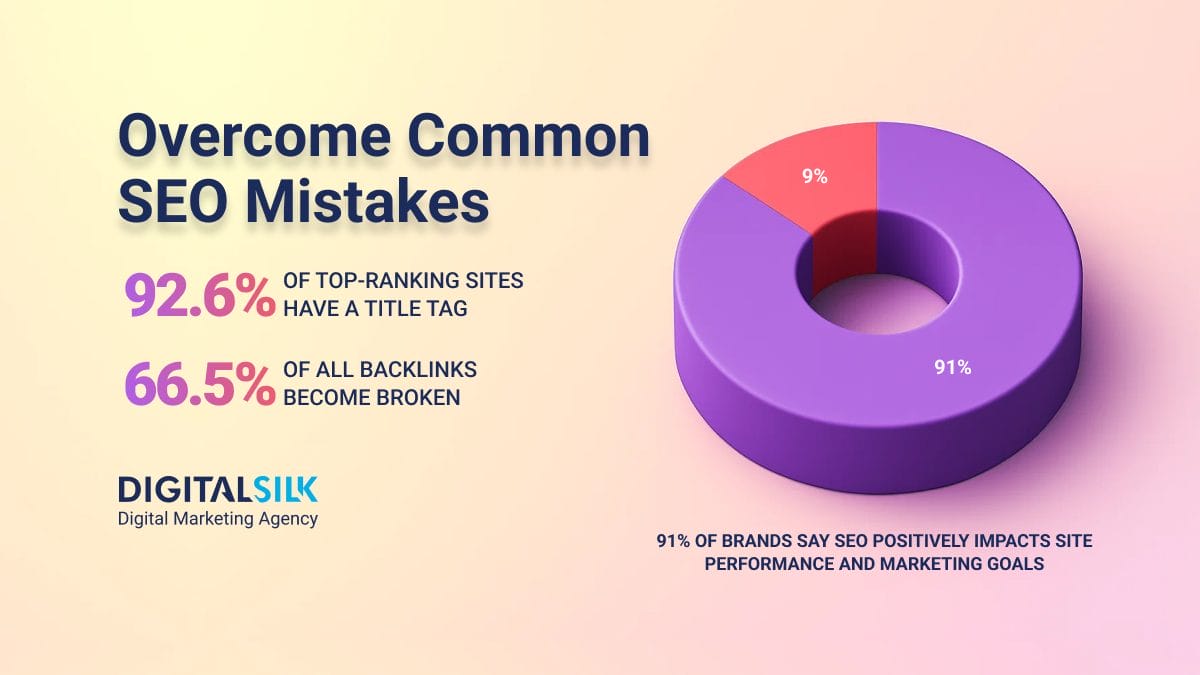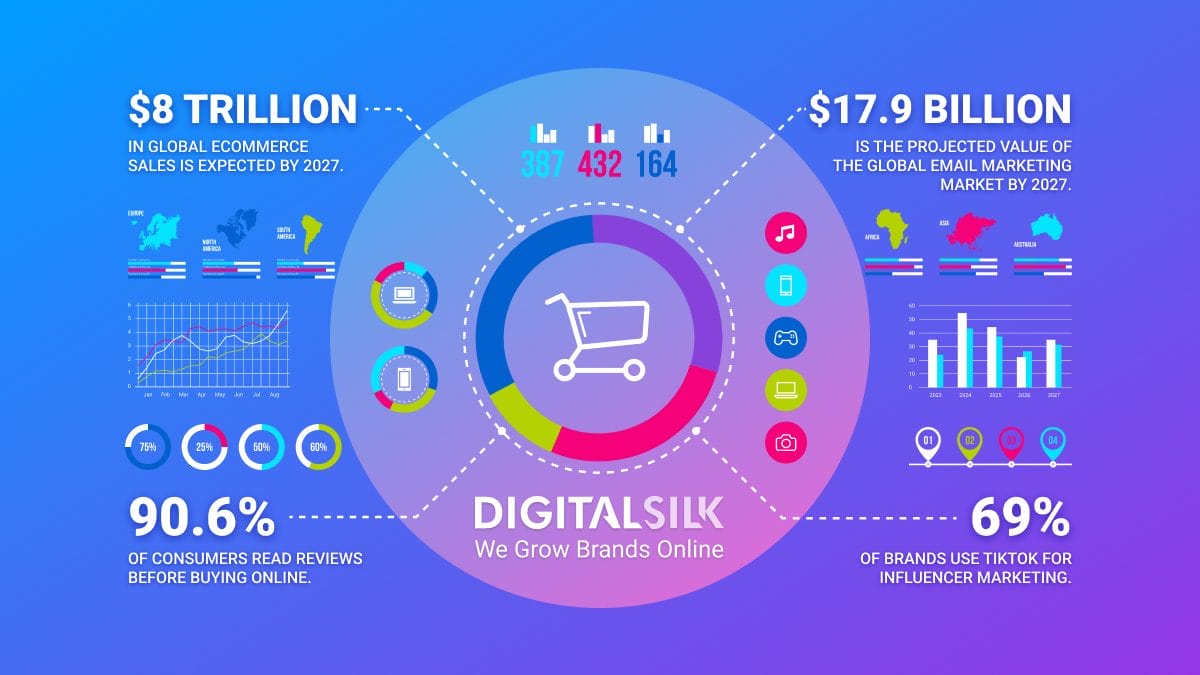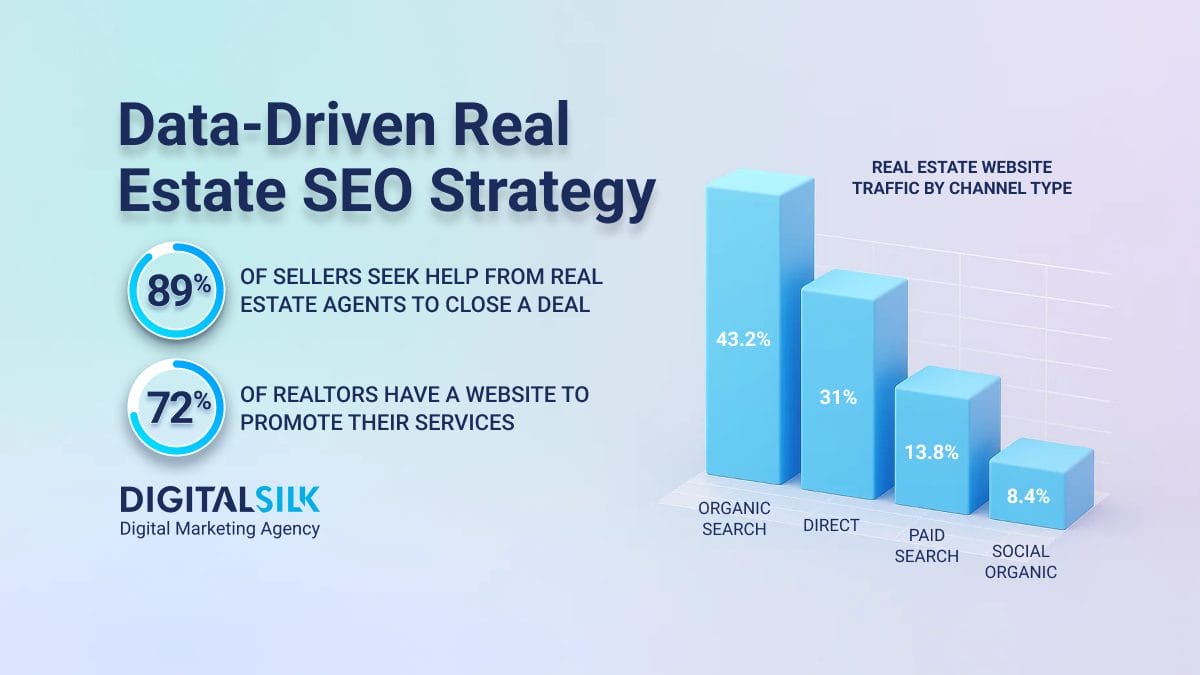Voice Search Statistics — Key Highlights
-
Smartphones are the most popular device for voice search, making up 56% of all usage across devices.
-
32% of consumers use voice daily to perform searches they’d normally type, showing how routine voice interactions have become.
-
Voice search results tend to come from featured snippets and top-ranking pages, favoring long-form, conversational content.
In 2024, over 8.4 billion voice assistants were in use — more than there are people on Earth.
Voice search is the new normal.
From SEO strategies to shopping behaviors, voice tech is reshaping the digital experience.
Here’s what the voice search statistics reveal for 2025 and what your business should do about it.
General Voice Search Statistics
People rely on voice technology every day. Whether it’s asking for the weather or playing music, voice commands have become second nature.
Behind this shift are some key usage patterns worth understanding.
The following voice search statistics offer a closer look at how often people use voice, which devices they prefer and how satisfied they are with the experience:
- Among all devices used for voice search, smartphones are the most popular, accounting for 56% of usage.
- The number of voice assistant users in the U.S. is expected to reach 162.7 million.
- 93% of consumers are satisfied with their voice assistants.
- 67% of smart speaker owners in the U.S. own an Amazon Echo.
- 48% of smart speaker owners who have heard an ad on their device say they’re more likely to consider the brand when the ad plays through their smart speaker compared to other channels.
How To Stay Competitive
- Prioritize mobile voice search. With over half of users relying on smartphones, mobile optimization is more important than ever.
- High satisfaction means high engagement. People trust their voice assistants, so clear, conversational content helps ensure your brand is included in voice answers.
- Smart speaker ads can influence decisions. Consumers who hear brand messages on these devices are more likely to take action.
How Many People Use Voice Search
From daily routines to local lookups, voice has become a regular part of how users interact with the internet.
It’s not just limited to smartphones either; smart speakers are now common in many homes, often with multiple devices per household.
These voice search statistics show just how embedded this habit has become across different use cases and age groups:
- 88.8 million people in the U.S. use Google Assistant.
- 32% of consumers said they use the voice function daily to search for something they’d normally type into a search engine.
- The same survey showed 29% of consumers use the voice function daily to ask a quick question.
- 90% of consumers said that the voice function makes it easier to search for something online.
- 34% of the U.S. population over the age of twelve own a smart speaker.
- 43% of smart speaker owners have three or more of these devices.
How To Stay Competitive
- Daily use is common. Brands need to consider how their content sounds, not just how it reads — voice-friendly answers matter.
- Local intent is strong. Businesses that serve a geographic area should optimize for voice-based local queries like “near me” searches.
- Voice makes things easier. Users turn to it for speed and simplicity, so your business info should be accurate, direct and easily read aloud.
Voice Search Shopping Statistics
Voice commands are making their way into the shopping experience, from researching products to ordering meals.
While only a small share of adults currently shop through voice regularly, interest is growing.
Many consumers already use voice assistants to compare options, make reservations or place food orders.
These statistics show how voice is starting to influence key moments in the buying journey:
- 8% of adults in the U.S. said they use voice shopping regularly.
- 35% of adults in the U.S. said they’re interested in voice shopping but aren’t currently using it.
- 10% of consumers said they’ve used voice assistants AI for online shopping more than eight times.
- 51% of people who use voice search for shopping use it to research products.
- 54% of voice search users have used this feature to make a restaurant reservation.
- 34% of consumers have used voice search to order food.
- Global purchases made via voice assistants on smart devices now total $164 billion in transaction value.
How To Stay Competitive
- Voice isn’t just for search — it’s part of the shopping funnel. Businesses should ensure product info is clear and easy to surface via voice.
- Many consumers say they plan to try voice shopping soon. Now is the time to ensure products and services are easy to find and purchase through voice-enabled platforms.
- Restaurants and food services can benefit. Voice-friendly booking and ordering options can boost convenience and customer satisfaction.
Voice Search SEO Statistics
Voice search isn’t just changing how consumers search; it’s also changing the rules of search engine optimization (SEO).
Voice queries tend to be longer, more conversational and often yield a single spoken answer (as opposed to a page of results).
Below are key statistics that highlight the impact of voice search on SEO and what marketers do to optimize content for voice-based queries:
- 40.7% of all voice search answers are pulled from a featured snippet on Google.
- Over 80% of answers delivered by Google’s voice assistant come from the top three results in search engine results pages.
- Just 1.71% of voice search results include the exact keyword in their title tag.
- The average voice search query is 29 words in length, compared to three to four words for text searches.
- Pages that appear in Google voice search results have an average of 2,312 words.
- Google voice search results are typically written at a reading level equivalent to ninth grade.
- Pages that appear in Google voice search results have an average domain rating of 76.8.
- 70.4% of URLs shown in voice search results use HTTPS, while only 50% of Google desktop results do the same.
- The average result in Google voice search has 1,199 Facebook shares and 44 X shares.
- 13% of marketers said they optimize for voice search.
How To Stay Competitive
- Voice search favors top-ranking content. If your page isn’t in the top three results, it’s unlikely to be chosen as a voice response.
- Featured Snippets are key real estate. Optimizing for them can dramatically increase your chances of being the spoken answer.
- Simpler, longer content performs better. Voice search stats show that conversational phrasing and clear structure matter more than keyword-stuffed titles.
Future Of Voice Search
Voice technology is evolving fast, with advancements in AI, speech recognition and smart devices driving broader adoption.
Younger generations, especially Gen Z, are leading the way as regular users of voice assistants. At the same time, consumer expectations are rising, with many believing that voice interactions will soon match the quality of human conversation.
These projections point to a steady voice search growth rate in the years ahead, both in usage and market value:
- The global voice search market is projected to reach $13.88 billion by 2030.
- 64% of the Gen Z population in the U.S. will use voice assistants monthly by 2027.
- Around four in ten consumers in the U.S. believe voice technology will be as good as speaking to a human in less than five years.
- The global market for AI in voice assistants is projected to reach $31.9 billion by 2033.
- The global speech recognition market is projected to reach $8.77 billion in 2025.
- The global revenue from smart speakers is projected to reach $29.65 billion by 2029.
What These Numbers Mean For You
- The voice search growth rate signals long-term opportunities. Businesses should begin building strategies that anticipate future user behavior.
- Gen Z adoption is rising. Voice search user demographics show that younger audiences are quickly embracing this technology, making voice-enabled experiences a priority for brands targeting this group.
- Investment in AI voice tech is accelerating. Companies that align early with these advancements can create more intuitive, competitive products.
Boost Your SEO With Digital Silk
The latest voice search statistics make it clear: voice is a key part of how people search today.
From smartphones to smart speakers, consumers are relying on voice to find answers, make purchases and interact with brands.
Businesses that adapt early and optimize for voice will have a major advantage in staying visible and competitive. Now is the time to align your SEO strategy with how people are really searching.
At Digital Silk, we provide SEO services designed to help businesses reach their audiences through more effective, targeted search strategies. Every campaign is customized to your unique goals, using data-driven techniques to increase visibility and bring in high-quality traffic.
We deliver measurable results and maintain clear communication throughout the process, ensuring you remain fully informed about your strategy’s performance at every stage.
Other services we offer include:
Contact our team online, call us at (800) 206-9413 or fill in the Request a Quote form below to schedule a consultation.
"*" indicates required fields


